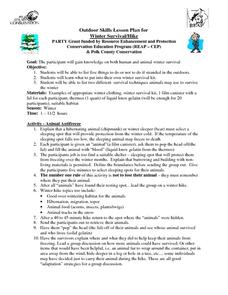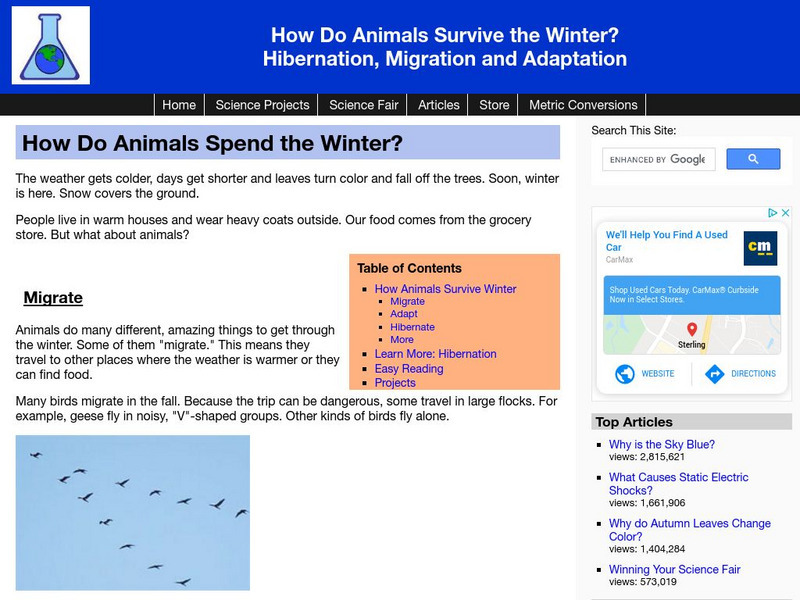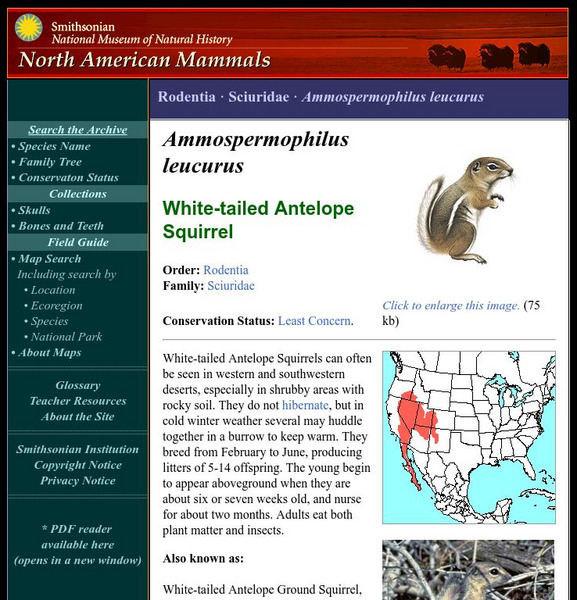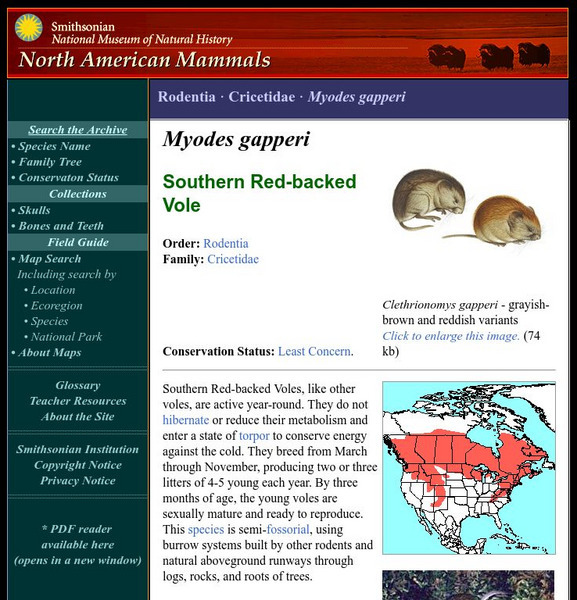Polk County Education
Winter Survival/Hike
Hibernation isn't just about staying fed, it's about staying warm. Young environmentalists explore the importance of staying warm in the wilderness with a short lesson about surviving in the wild. Using gelatin to represent warm-blooded...
Get Set for School
Number Formation Chart
Help young learners write their numbers with a number formation chart. It illustrates the way their pencils should move when they make each number, along with a cute story about what each number is doing and thinking as it is being written.
Science Made Simple
Science Made Simple: How Do Animals Spend the Winter?
Use this site to learn how animals use hibernation, adaptation, and migration to overcome the difficulties of winter.
Smithsonian Institution
National Museum of Natural History: American Mammals: American Black Bear
Most Black Bears hibernate for up to seven months, and do not eat, drink, urinate, or exercise the entire time. In the South, where plant food is available all year, not all bears hibernate, but pregnant females do. Learn more about the...
Other
Beavers: Frequently Asked Questions & Answers
Did you know that beavers are vegetarians that do not hibernate and are rarely dangerous to people? You will find more beaver facts in this informative question and answer site.
Smithsonian Institution
National Museum of Natural History: American Mammals: White Tailed Antelope Squirrel
White-tailed Antelope Squirrels can often be seen in western and southwestern deserts, especially in shrubby areas with rocky soil. They do not hibernate, but in cold winter weather, several may huddle together in a burrow to keep warm....
Smithsonian Institution
National Museum of Natural History: American Mammals: Southern Red Backed Vole
Southern Red-backed Voles, like other voles, are active year-round. They do not hibernate or reduce their metabolism and enter a state of torpor to conserve energy against the cold. Learn more about the Clethrionomys gapperi, more...






